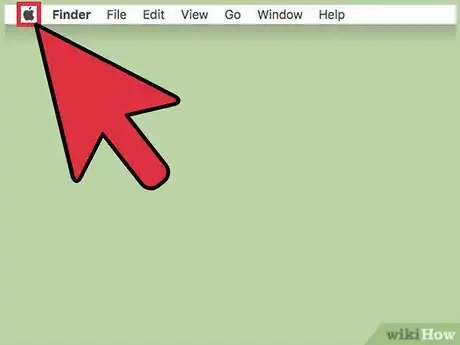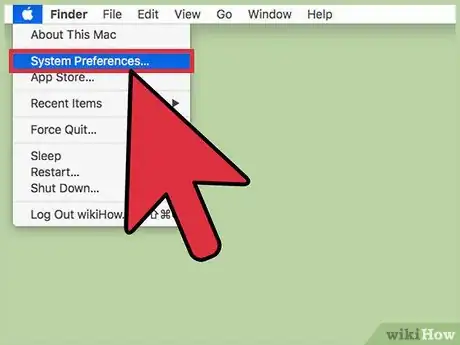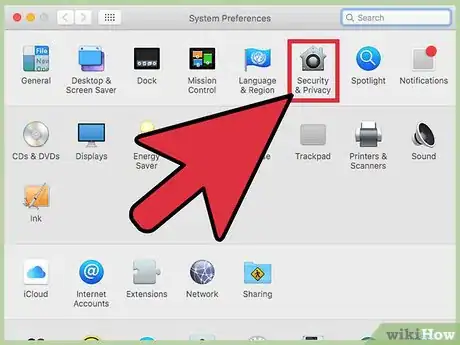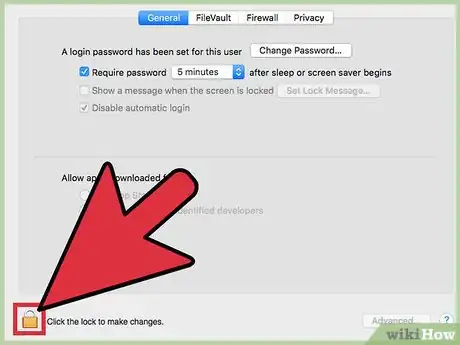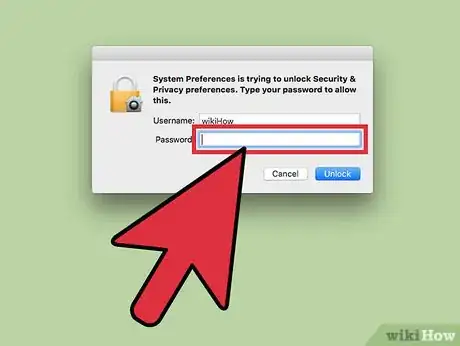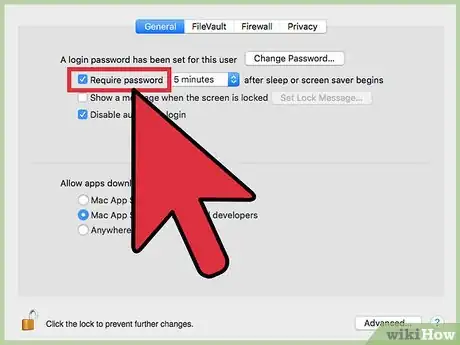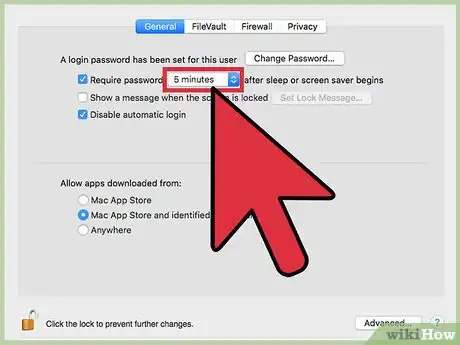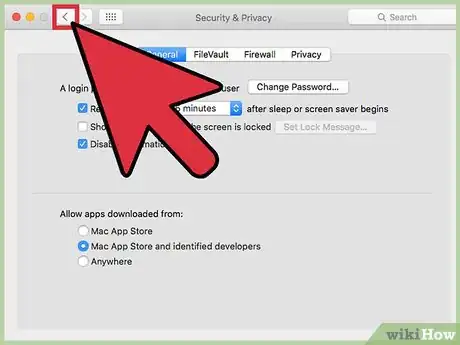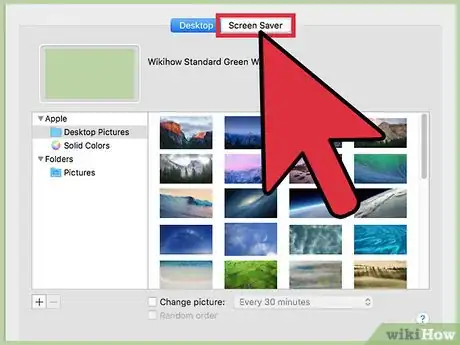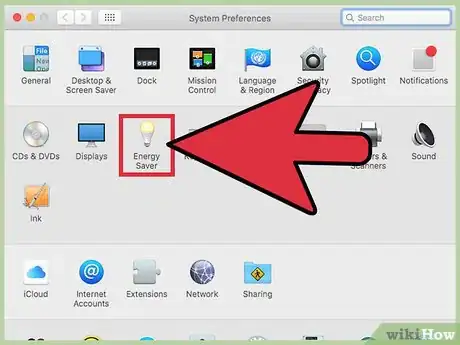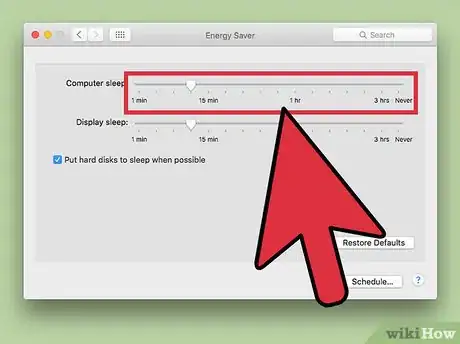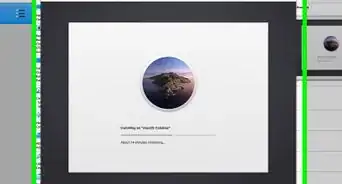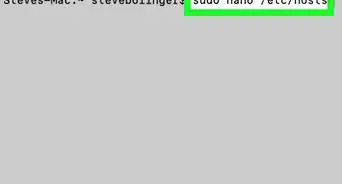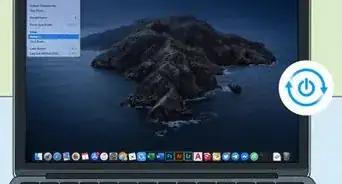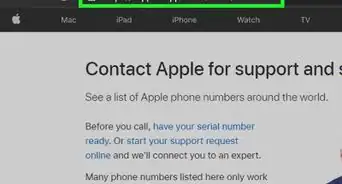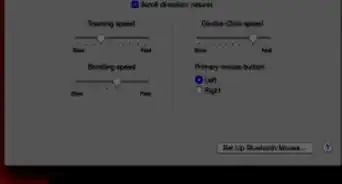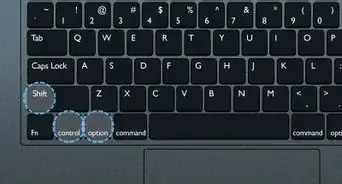X
This article was co-authored by wikiHow Staff. Our trained team of editors and researchers validate articles for accuracy and comprehensiveness. wikiHow's Content Management Team carefully monitors the work from our editorial staff to ensure that each article is backed by trusted research and meets our high quality standards.
This article has been viewed 16,331 times.
Learn more...
To change how long until your Mac asks for a password, click the Apple menu → click System Preferences → click Security & Privacy → click the Require Password menu to select a new time.
Steps
Part 1
Part 1 of 2:
Setting Your Password Time Limit
-
1Click the Apple menu. This is in the upper-left corner of the screen.
-
2Click "System Preferences." If the main System Preferences menu does not appear, click "Show All" at the top of the window. This looks like a grid with 12 dots.Advertisement
-
3Click "Security & Privacy." This is in the top row of options.
-
4Click the padlock button in the lower-left corner.
-
5Type your user password.
-
6Check the box next to "Require password." When this is enabled, you can set the time until your password is required after your computer goes to sleep or turns on the screen saver. If you don't want to be prompted for your password ever when your computer goes to sleep or into screen saver, uncheck this box.
-
7Click the drop-down menu after "Require password."
-
8Click the amount of time you want to use. Your computer will wait this amount of time after sleeping or enabling the screen saver until it asks for your password again.
Advertisement
Part 2
Part 2 of 2:
Adjusting Your Screen Saver and Sleep Times
-
1Click the "Show All" button at the top of the window. This will return you to the System Preferences menu so that you can change the time until your computer goes to sleep or enables the screen saver.
-
2Click the "Desktop & Screen Saver" option.
-
3Click the "Screen Saver" tab.
-
4Click the "Start after" menu.
-
5Click the time that your screen saver should start. If you don't want a screen saver, select "Never." Your computer will prompt you for a password once the allotted time has passed after the screen saver activates.
-
6Click the "Show All" button. You'll now be changing the time until your computer puts itself to sleep.
-
7Click the "Energy Saver" option.
-
8Click and drag the "Computer sleep" slider. Your computer will put itself to sleep after this amount of inactivity. You'll then be prompted for your password however long after that, depending on what you set earlier in the Security & Privacy menu.
Advertisement
About This Article
Advertisement
